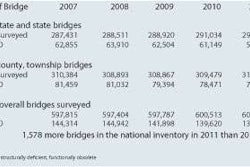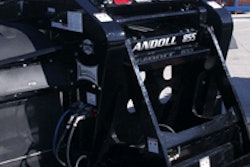Redeemed by Green Roads
Back in the mid-’70s, my personal profile was a cursed brew of idealism, pragmatism and acts of sheer self-indulgence.
 [email protected]
[email protected]My burden was especially heavy in matters of environment and ecology. I could see the need for clean air, for example, but the awful cars that were produced in the middle of that decade in the name of cleaner air were a purgatory for driving enthusiasts.
I went along with the clean-air legislation, but I also rejoiced in the antics of the first couple of Cannonball Baker Sea-to-Shining Sea Memorial Trophy Dashes (also known as Cannonball Runs), the outlaw races organized by Brock Yates, one of the greatest automotive writers of the era. His rebellion against the 55-mph national speed limit, bad cars and the legislation that produced them, coupled with the sheer freedom of the race — its only rules were where it started and ended — were a great release from the burdens of saving the environment and the other trappings of good citizenship.
Highways presented a similar schizophrenic dilemma for me. As one who loved open spaces and fast roads, interstates and freeways were a blessing and a curse — the curse being the sprawl that resulted when fast roads made 20-mile commutes easy… at least for awhile.
By the end of the decade, mainstream environmentalists almost universally condemned freeways as the work of the devil. My protests that roads don’t make sprawl, lack of zoning does, fell on deaf ears. Once again, I found my tree-hugging instincts at war with a love for great roads, each quality an anathema to different political constituencies — and different groups of friends and associates.
It was like being a Vietnam veteran. Hawks liked that you were a vet but figured you for a drug addict. Doves were OK with the drug abuse but thought you were a killer. If you didn’t use drugs or kill innocents, people didn’t believe anything else you said.
So the fact that I loved roads and cared about the environment had to be my little secret in the ‘70s and ‘80s, like Aunt Bee’s brandy bracer or the reverend’s penchant for cursing when the other team scored.
Imagine then the freedom I feel in the 21st century when I can proclaim to my tree-hugging friends that our pavements are among the greenest man-made structures in our civilization. Asphalt is the most recycled product in the country, and concrete is very high on the list, too. Thanks to improvements in design, materials and processes, the service life of pavements has been dramatically extended, even as usage has skyrocketed. Carbon emissions in the processes that create concrete and asphalt have declined steeply in the past two decades, and continue that downward trend.
Porous asphalt, pervious concrete and open-graded friction course improve environmental water quality, enhancing sensitive ecosystems.
And here’s the other part: I can proclaim to my pro-industry friends that all of the advances in the environmental integrity of pavements have enhanced the cost effectiveness of pavements, too. Recycling reduces costs. Warm-mix asphalt extends the paving season and makes possible longer delivery routes while also enhancing compaction. Technologically-advanced concrete and asphalt mixes lead to thinner pavements and less material required to carry the same loads. The list goes on…
These are indeed great times for long-suffering closet-cases like me. Not only can I openly love roads and the environment, I can even confess to being a Vietnam veteran without losing friends.










